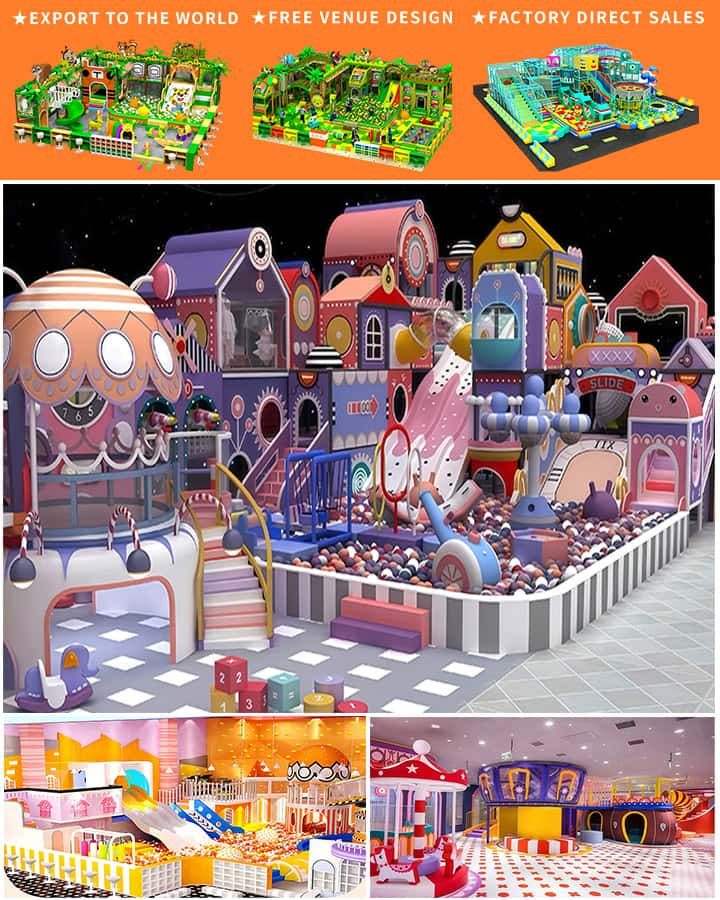In recent years, indoor play equipment has become a staple in homes, daycares, and play centers worldwide. Among the various options available, ball pits stand out as an exciting and beneficial choice for children’s development. Combining fun with physical activity, ball pits offer a multifaceted playground experience that captivates kids while fostering essential motor skills and social interaction. This article delves into the allure of ball pits, their benefits, safety considerations, and tips for setting up an indoor ball pit that will provide endless hours of joy.
What Makes Ball Pit Indoor Play Equipment Special?
A ball pit is essentially a large, enclosed area filled with colorful plastic balls. Children can dive into this sea of vibrant orbs, engage in imaginative play, and even partake in physical activities like swimming through the balls or throwing them. The sensory-rich environment of a ball pit not only entertains but also supports cognitive and physical development.
Benefits of Ball Pits for Children
- Motor Skill Development:
- Ball pits encourage children to crawl, climb, and jump, which are fundamental movements that enhance gross motor skills. As they maneuver through the balls, they improve their balance, coordination, and strength.
- Sensory Stimulation:
- The bright colors and textures of the balls provide visual and tactile stimulation. This sensory input is crucial for developing neural pathways and can be particularly soothing or invigorating depending on the child’s individual needs.
- Social Interaction:
- Ball pits are often communal spaces where kids can interact, share, and cooperate. This social engagement is vital for emotional development and learning how to navigate group dynamics.
- Imaginative Play:

- A ball pit serves as a blank canvas for children’s imaginations. Kids might pretend they’re diving into the ocean, exploring an alien terrain, or simply enjoying the sheer joy of being enveloped by colorful spheres.
Safety First: Considerations for Ball Pits
While ball pits are generally safe, certain precautions should be taken to ensure a secure play environment:
- Supervision:
- Always supervise young children to prevent accidents such as falls or ingestion of small objects.
- Age Appropriateness:
- Ensure the ball pit suits the age and size of the child. Some ball pits come with age recommendations to guide your selection.
- Cleanliness:
- Regularly clean the balls and the pit to maintain hygiene. Consider using non-toxic cleaning agents and washing the balls periodically.
- Structural Integrity:
- Check the pit for any signs of wear and tear, ensuring there are no sharp edges or loose components that could pose a hazard.
Setting Up Your Own Indoor Ball Pit
Creating an indoor ball pit doesn’t have to be complicated. Here’s a simple guide to get you started:
- Choose the Right Location:
- Select a spacious area free from obstacles. Living rooms or large bedrooms are ideal spots.
- Select a Containment Unit:
- You can purchase commercial ball pit structures or DIY one using pool noodles, foam board, and PVC pipes. Ensure the structure is stable and tall enough to contain enthusiastic toddlers or preschoolers.
- Pick the Balls:
- Choose soft, lightweight, and non-toxic plastic balls. Avoid balls that are too small, especially for younger children, to reduce the risk of choking hazards.
- Add Elements of Fun:
- Introduce accessories like floating toys, inflatable rings, or even a small slide to enhance the play experience.
Conclusion
An indoor ball pit is more than just a playful indulgence; it’s a dynamic tool for physical, sensory, and social development. By understanding the benefits, adhering to safety practices, and thoughtfully setting up the space, parents and caregivers can create an engaging and enriching environment that children will adore. So why wait? Dive into the world of indoor play equipment and let the ball pit adventures begin!
This comprehensive overview highlights the joys and advantages of incorporating a ball pit into your indoor play arsenal, promising both fun and developmental growth for your little ones.




